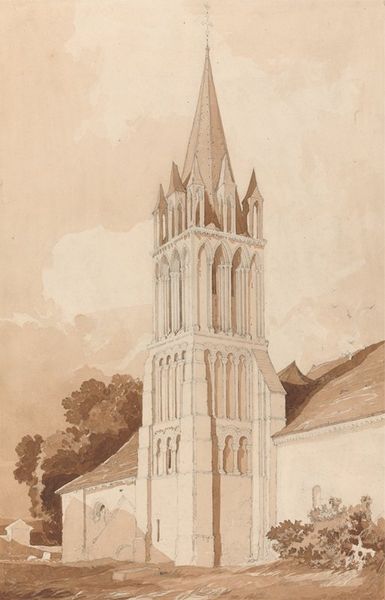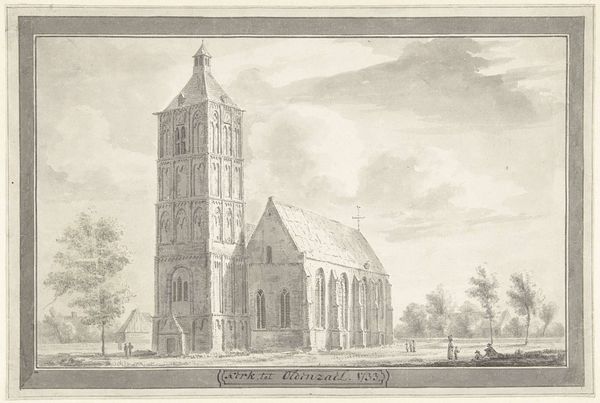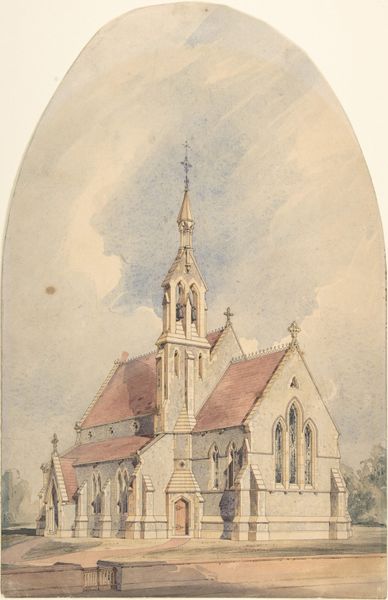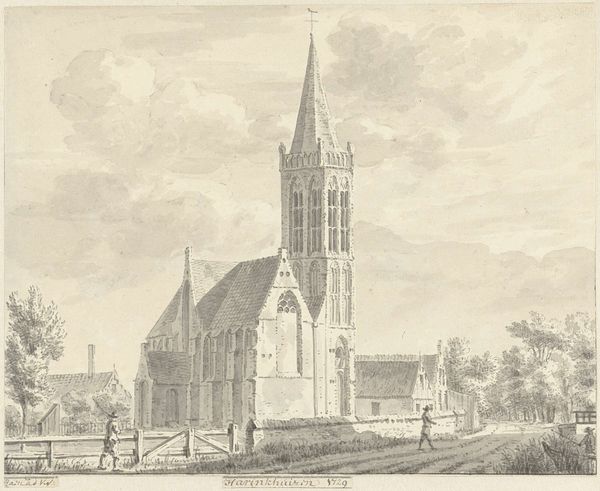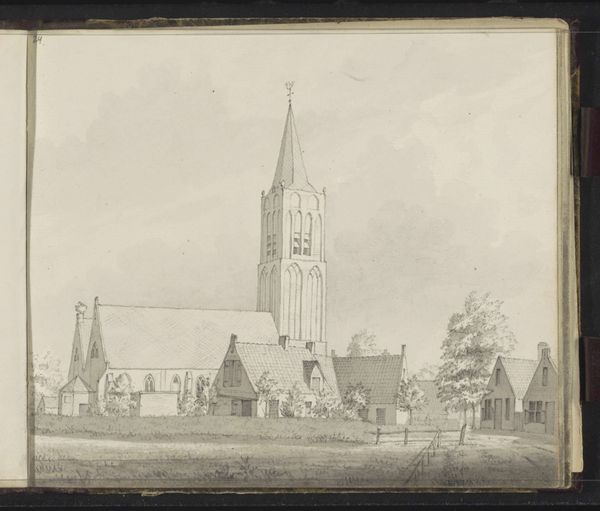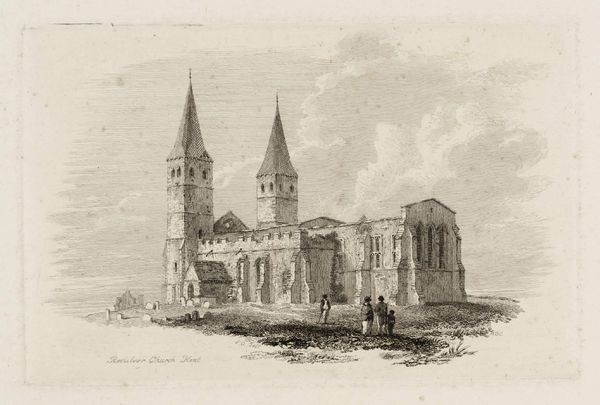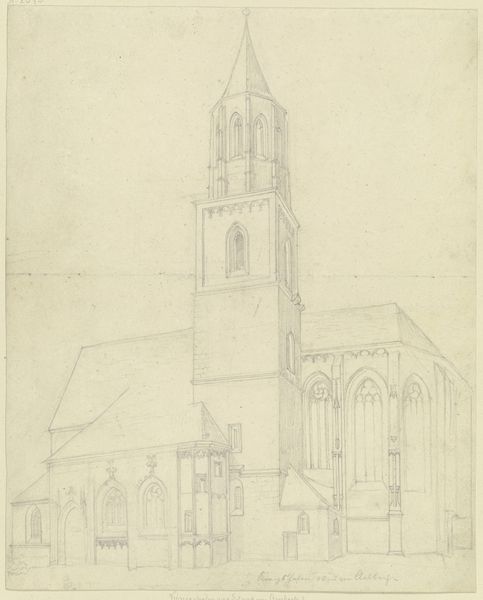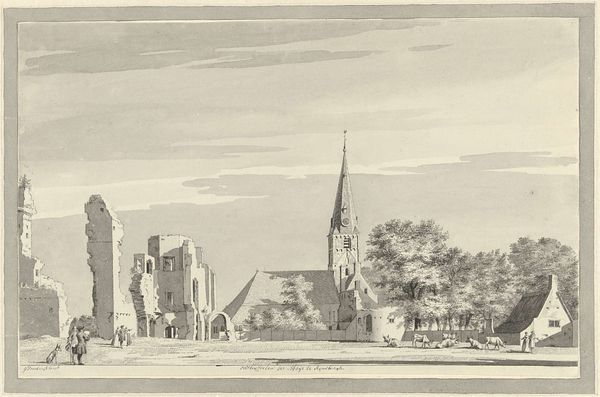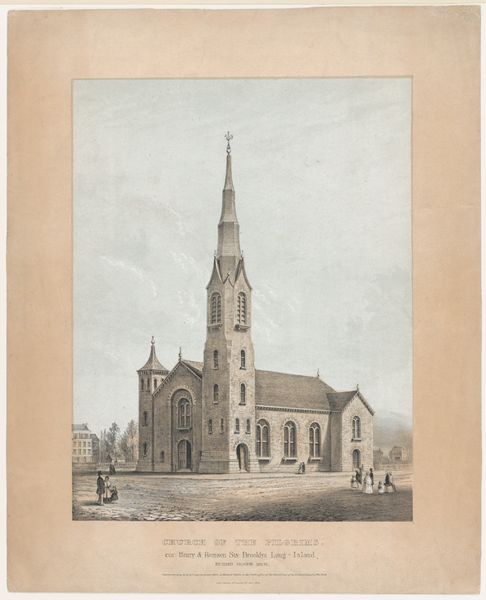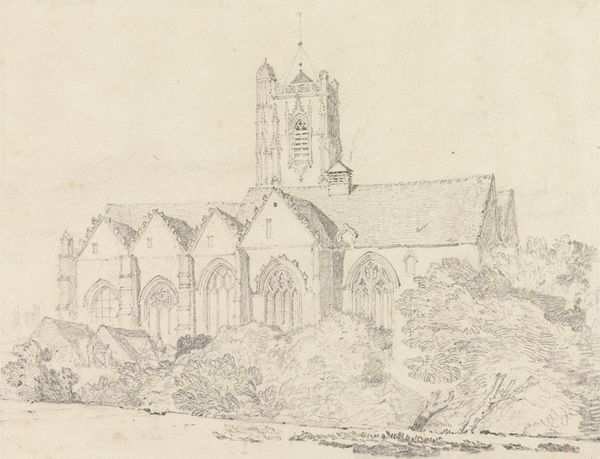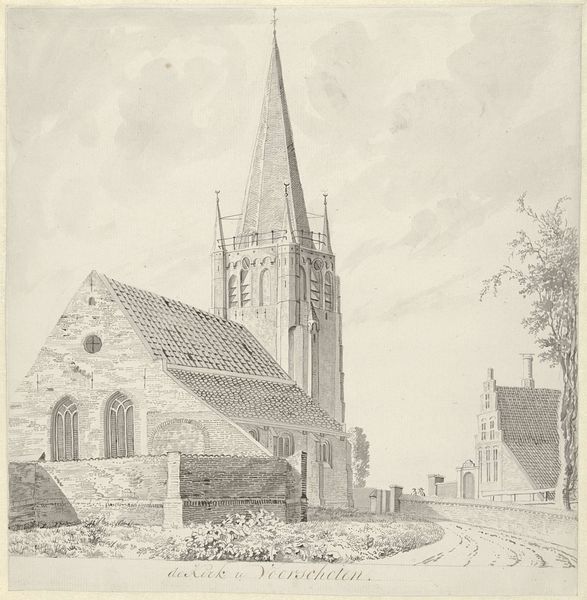
drawing, plein-air, ink
#
drawing
#
plein-air
#
landscape
#
ink
#
romanticism
#
cityscape
#
history-painting
Copyright: Public Domain: Artvee
Curator: Let's delve into John Sell Cotman's "Douvres Church, Normandy," created around 1820. Cotman, as a painter associated with the Romantic style, captured this imposing medieval church using ink wash. Editor: Immediately, I’m struck by the composition—the formidable church dominating the scene, juxtaposed with the delicate ink lines. The contrast is stark. It communicates an immediate sense of grandeur, doesn't it? Curator: It does, and it's critical to place such architecture within its era. Religious architecture during the Romantic period symbolized far more than piety. Post-French Revolution, it acted as a stark reminder of power structures and the inherent inequality pervasive through the continent at this time. Editor: True, the very presence of such imposing structures reinforced social hierarchies. From a formal standpoint, the artist uses the height of the tower to further impose a top-down dynamic in the composition. What can be made from Cotman’s deliberate rendering in monochromatic values here? Curator: It speaks volumes! Color, which would denote individuality, expression, the everyday joys of life, is noticeably missing here. What we’re left with is bare structure – as the architecture shows – both stand bare as skeletal systems bereft of vivacious life, almost ghostly! Editor: Indeed, it emphasizes form and volume rather than details. There's an undeniable simplicity and purity in this focus on form; you can observe that through his economy of line and carefully applied washes. Curator: But the seemingly simple lines point towards societal strictures. The choice of leaving the tower looming over working men and women reinforces gender roles – what men built, women accepted. The weight of those walls is, after all, born most heavily by some members of the population, while many others were conveniently exempt. Editor: Yes, there is a certain inescapable truth. Cotman used lines and shading to create this imposing, almost austere scene. Yet, I'm curious about his choice to depict a dilapidated section, a ruin next to the pristine church. Curator: Precisely. That ruin highlights societal fractures. Power cannot be absolute, as we have often learned through painful moments of violence in history! Editor: Seeing it through the lens of both art and sociopolitical significance enriches our understanding of it, I believe. Thank you for shedding a little extra light on “Douvres Church, Normandy". Curator: My pleasure! Viewing artworks critically allows for the cultivation of deeper perspectives – not only on what used to be, but perhaps how we came to be!
Comments
No comments
Be the first to comment and join the conversation on the ultimate creative platform.
